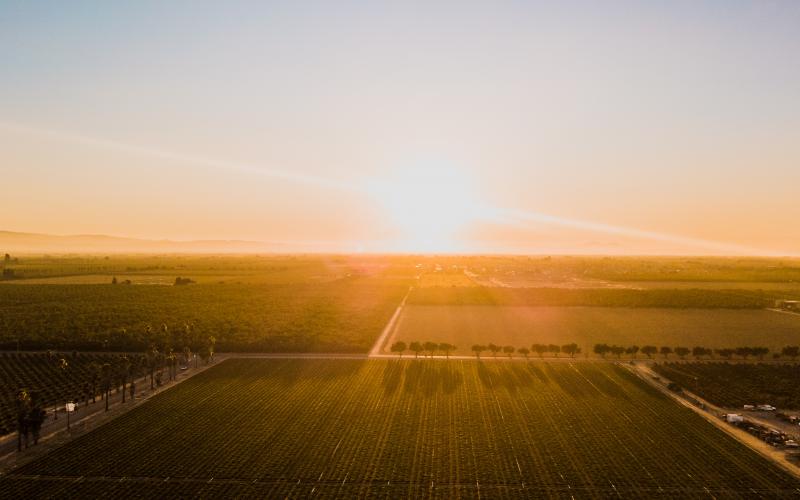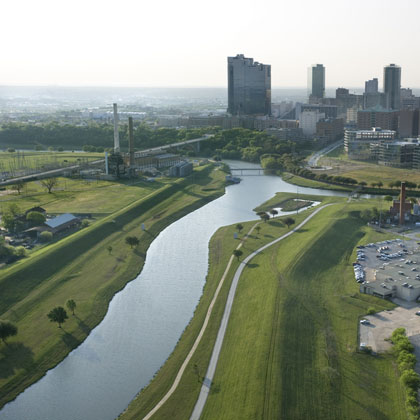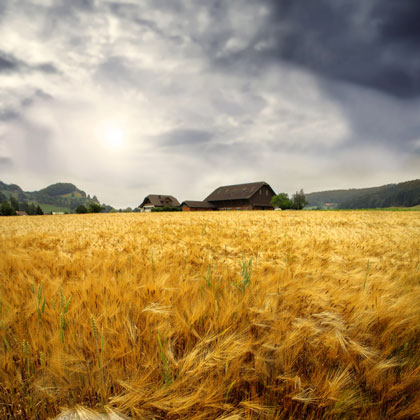Climate Change and the Future of Farming

Climate Change and the Future of Farming
How can farming adapt to a changing climate? A new study explores gaps in traditional thinking about farmers’ adaptations and proposes a new way to assess a farm’s vulnerability to climate change. This new framework is a first step toward preparing agriculture for an uncertain future.
Steele, Caitriana, Julian Reyes, Emile Elias, Sierra Aney, Albert Rango. “Cascading impacts of climate change on southwestern US cropland agriculture.” Climatic Change 148, no. 3 (May 31, 2018): 437-450. Accessed September 7, 2018. doi: https://doi.org/10.1007/s10584-018-2220-4.
Mount Tambora, an Indonesian volcano, erupted in 1815. Its ash blocked out the sun and shifted global air currents; American farmers 10,000 miles away suffered terribly. June of 1816 saw a snowstorm in upstate New York, and summer frosts hit farms all along the East Coast. The unexpected weather rocked global crop markets and led to America’s first major depression from 1819 to 1822. But the climate bounced back in a few years, and business continued as usual.
We won’t see the same rebound as modern climate change advances, but farmers today are almost as unprepared for their new climate conditions as they were in 1816. How can they begin to assess their needs in a rapidly changing climate? While scientists can predict how biophysical factors like rainfall and temperature will respond to climate change, there are other factors to consider. For example, in many places where cropland agriculture is irrigated, farms are pumping out groundwater faster than it can be replenished. Should farmers then include predictions of future groundwater availability in their planning? And some farmers have more capital, while others make do with less. Is it fair to expect that all farmers respond to climate change in the same way?
A recent study, published in Climatic Change by researchers from New Mexico State University and the U.S. Department of Agriculture (USDA), seeks to answer these questions. To help farmers understand their needs in a changing climate, the researchers developed a framework that incorporates factors like population growth, access to capital, and governmental support. Then, they applied this new vulnerability framework to case studies of cropland agriculture in the Southwest U.S. Their approach helps demonstrate the value of these vulnerability assessments for farmers pursuing climate adaptation measures.
The Southwest is a useful study area because, in the researchers’ words, “[c]limate change threatens successful agriculture” there both through increasing temperatures and future water shortages. However, biophysical factors are not the only relevant consideration. To better understand the other factors at play, the researchers studied tart cherry production in Utah County, Utah and pecan nut production in Doña Ana County, New Mexico.
Utah County cherry crops have suffered from inclement weather in the past. Spring frosts can damage blossoms, stunting cherry growth later in the season, and some farmers have implemented certain management interventions to guard against such extreme temperature fluctuations. If we applied the standard biophysical vulnerability assessment to a Utah county cherry farm, we could help the farmers understand if their interventions would successfully help their crops adapt. The researchers’ more comprehensive framework acknowledges that such adaptations are expensive, and thus only accessible to certain farmers. It considers farmer insurance policies subsidized by the USDA, which ease the financial burden of widespread crop failure.
The comprehensive vulnerability assessment can also help farmers better deal with water management in an increasingly dry region. In Doña Ana County, New Mexico, researchers found that legal issues around water rights may affect who might be able to maintain their pecan farms as surface water disappears. Parts of New Mexico will see river flows decline by up to 50 percent by 2050, which means a greater dependence on shrinking groundwater stores. Farmers will compete for scarce water as the local population grows.
Water rights in New Mexico are allocated based on who got to a water source first, which means that those with junior water rights could be the first to suffer as water runs out. Authorities are now anticipating the need to enact water extraction quotas, though they hope such enforcement will never be necessary. Knowing that river flows will decrease should signal to farmers that they should plant less thirsty crops or dig deeper wells but decreasing flows do not occur in a vacuum. Some farmers will lose more than others and establishing who has the more urgent concern is important for adaptation planning.
Farmers are enmeshed in a complex web of institutions and economies. Those relationships will define farmers’ vulnerability to climate change and what they can do about it. By demonstrating the value of comprehensive vulnerability assessments, this study suggests how agricultural stakeholders and policy-makers should plan for climate change. Climate change is our generation’s Tambora eruption. These researchers offer us a choice: will we be caught unprepared by another sudden climate change? Or will we use the information we have and meet its challenges head-on?




